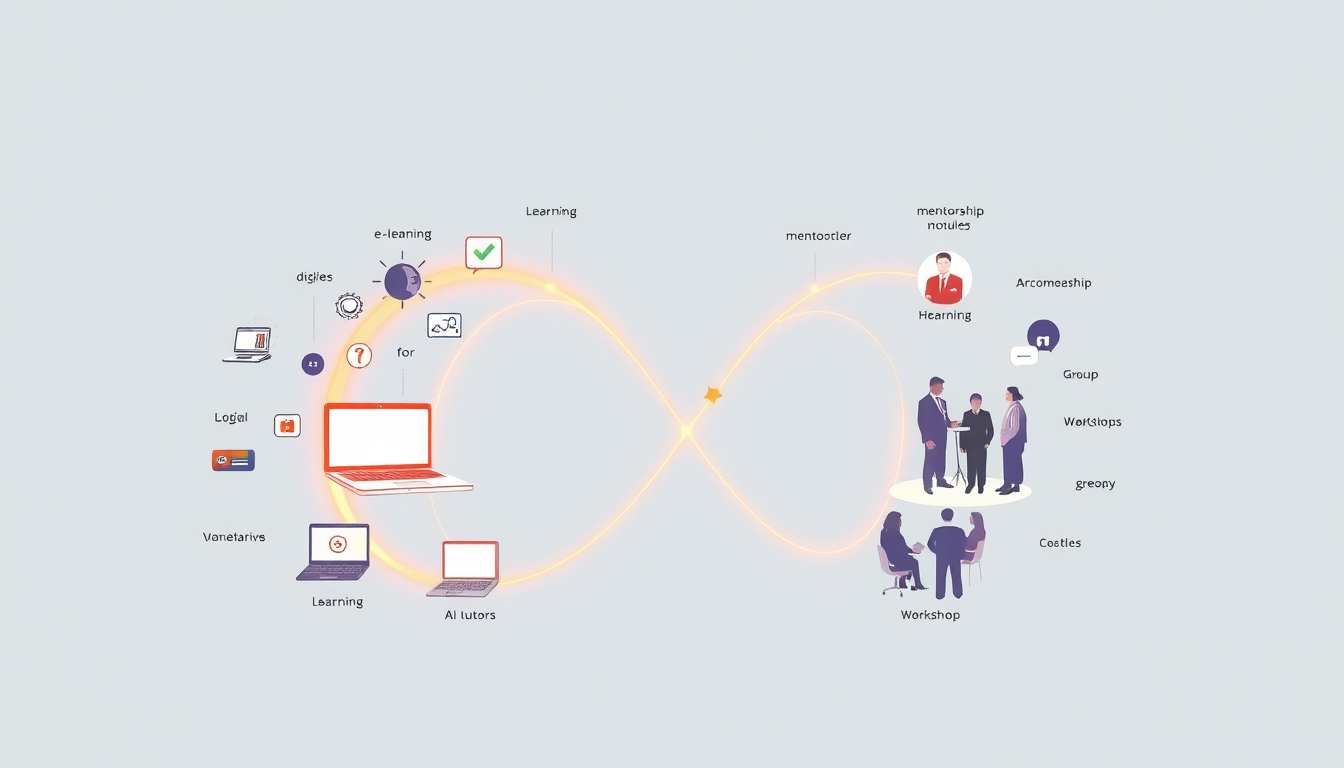The Future of Learning: Why Blended Training Is the New Standard
The Future of Learning: Why Blended Training Is the New Standard
Blog Article
Let’s be real for a moment — the way we learn has completely changed in the last few years. A lot of that came from necessity. The pandemic forced classrooms, workshops, and corporate training rooms to go digital overnight. And while we all did our best to adapt, let’s face it: not everything translated well to a Zoom call.
But now, with things somewhat back to normal, we’ve been given a rare opportunity — to take the best of both worlds: the flexibility of online learning and the depth of in-person experiences. That’s where blended training steps in.
And honestly? It’s not just a trend. It’s becoming the new standard — and for good reason.
Why Purely Online Training Falls Short
Don’t get me wrong. Online training has a lot going for it. It’s flexible, cost-effective, and easy to scale. People can learn at their own pace, revisit material when they need to, and avoid the hassle of commuting.
But let’s not pretend it’s perfect.
Ever sat through an hour-long recorded video and realized you remembered none of it? Yeah, me too.
Online learning often lacks engagement. There's no one to ask a quick question, no real-time feedback, and no opportunity to bounce ideas off someone. It can feel isolating. And for some people, especially those who thrive in interactive environments, it just doesn’t stick.
In-Person Training Has Its Strengths — and Limits
On the flip side, in-person training brings energy you can’t replicate on a screen. You can read the room, have off-the-cuff conversations, and dig deep into tough topics. Team members build relationships faster. The hands-on activities? Way more effective in real time.
But it's not always practical.
Travel costs, scheduling conflicts, time away from work — these add up fast. And let’s be honest, attention spans are shorter these days. A full-day workshop doesn’t guarantee full-day focus.
So, What’s the Sweet Spot? Blended Training.
Blended training gives you the structure of online content plus the power of in-person connection. It allows learners to engage with material on their own schedule, then come together to apply it, ask questions, and build deeper understanding.
Think of it like this:
Online = Learn the theory, background, or process
In-person = Practice it, discuss it, apply it, troubleshoot it
It’s a rhythm that works — especially for modern teams with mixed learning styles.
People Learn Differently — And That Matters
Some folks love diving into videos and e-learning modules. Others need face-to-face interaction to make sense of things. Blended training respects that. It meets people where they are.
It also supports different paces. Not everyone learns at the same speed. Giving people the chance to pause, replay, or review online content means they show up to in-person sessions with better questions and more confidence.
At Ideassion IT, we’ve seen this firsthand. Teams perform better when training doesn’t force a one-size-fits-all model. When employees feel like the training was built with them in mind — not just pushed out of an HR handbook — the results are real.
The Business Case for Blended
From a company perspective, blended learning just makes sense.
It reduces costs without reducing impact.
It minimizes travel and downtime.
It makes training accessible across locations and time zones.
Most importantly, it improves retention — both of the material and your people. Because when employees feel supported in how they learn, they’re more likely to stick around.
What It Looks Like in Practice
A typical blended training program might look like this:
Pre-work: Short videos, readings, or quizzes to introduce concepts
Live session: Hands-on workshop or group discussion (in-person or virtual)
Follow-up: Additional resources or one-on-one coaching
It’s not complicated — it just takes intention. And when done right, it’s far more effective than either method on its own.
Final Thoughts: This Isn’t the Future — It’s the Now
Blended training isn’t some futuristic concept we’re waiting to adopt. It’s already here. And the companies embracing it are seeing the benefits in real time — better engagement, stronger teams, and smarter learners.
If you’re still relying on outdated training methods, now’s the time to rethink it. Your team deserves learning that’s flexible, modern, and meaningful.
And if you’re not sure where to start, Ideassion IT specializes in blended training programs that are built for today’s learners — and tomorrow’s leaders.
Report this page